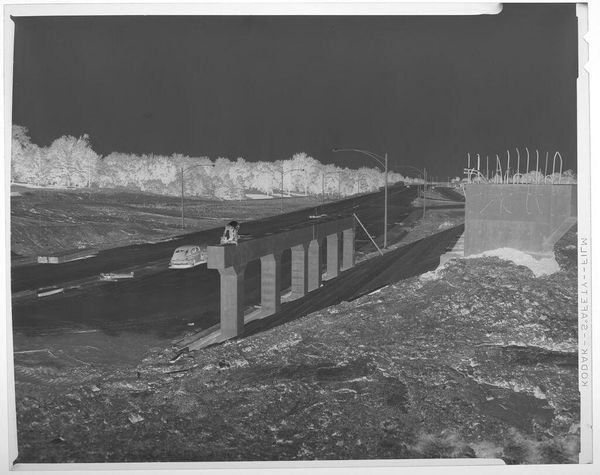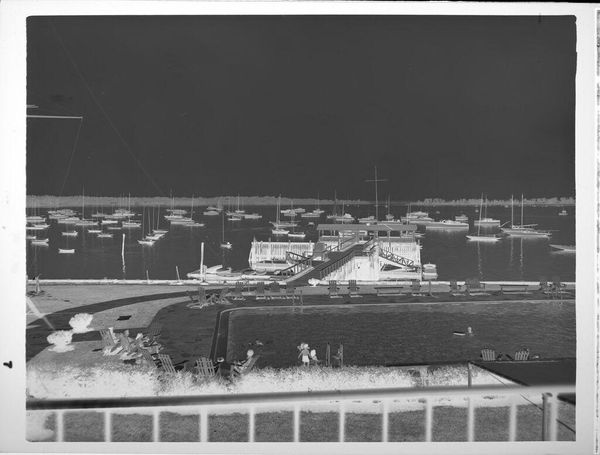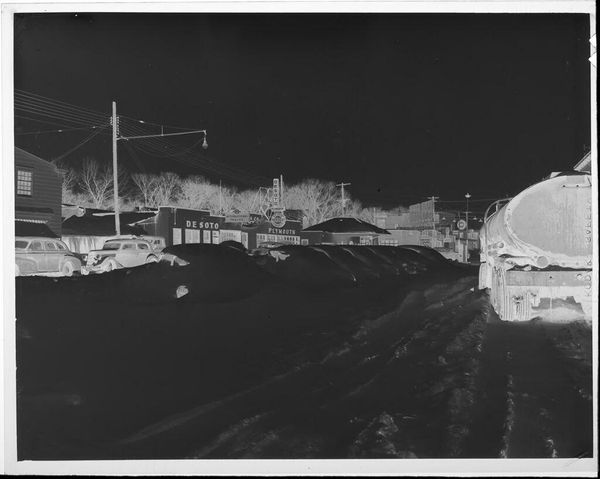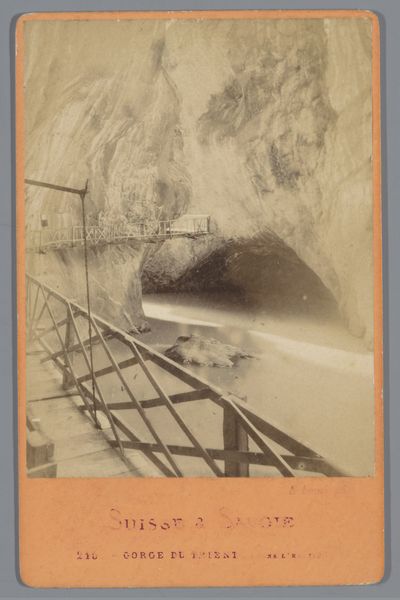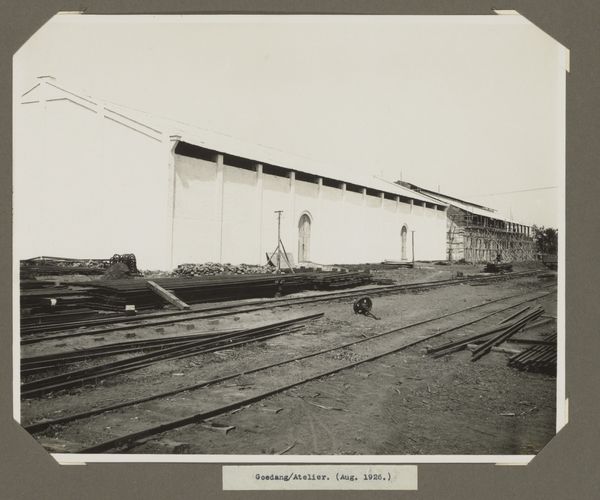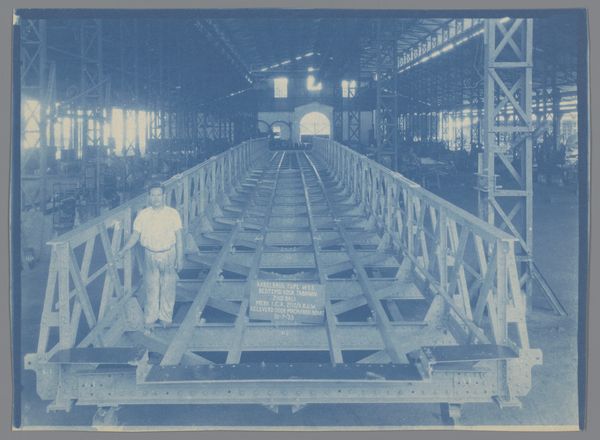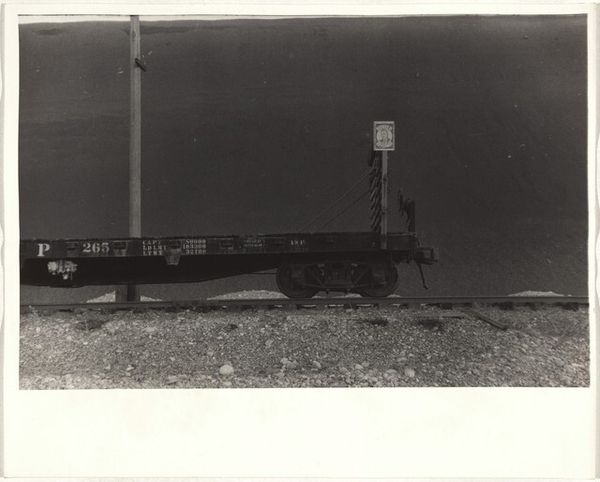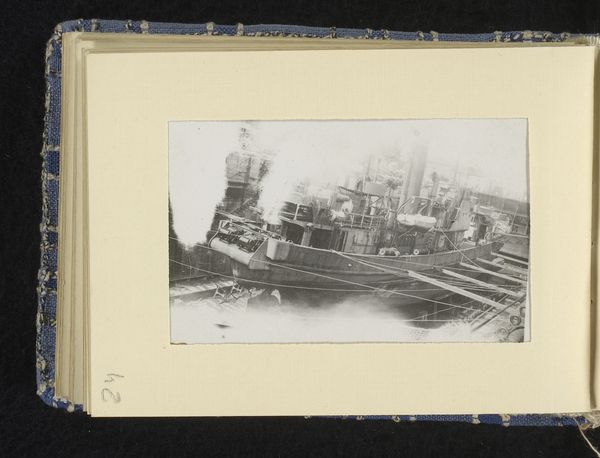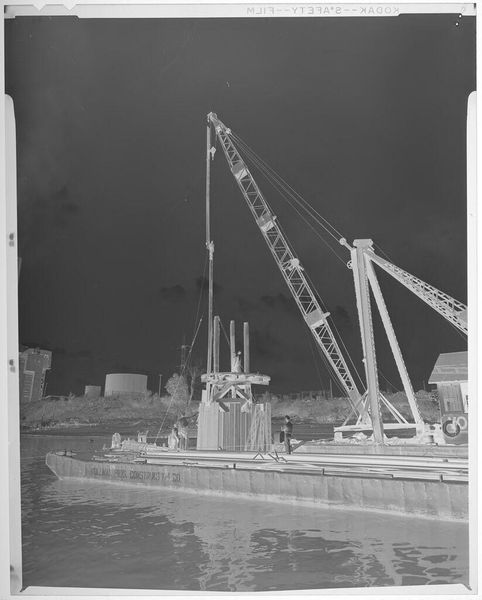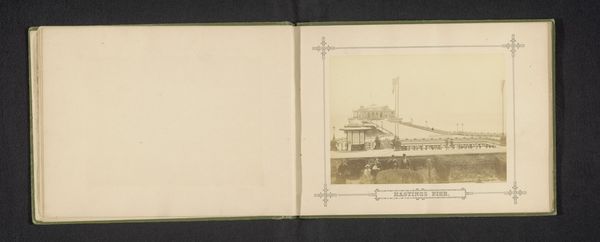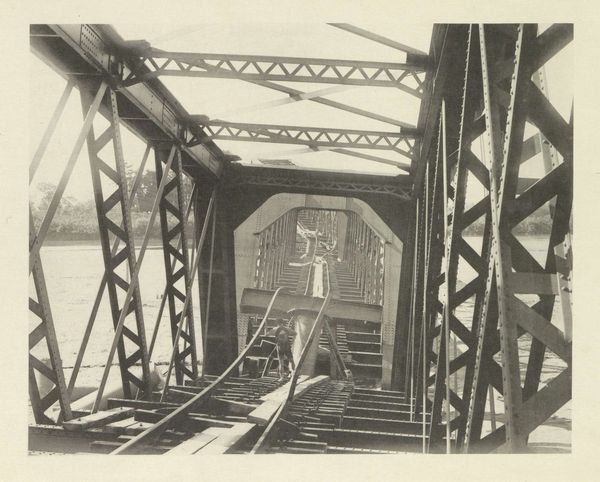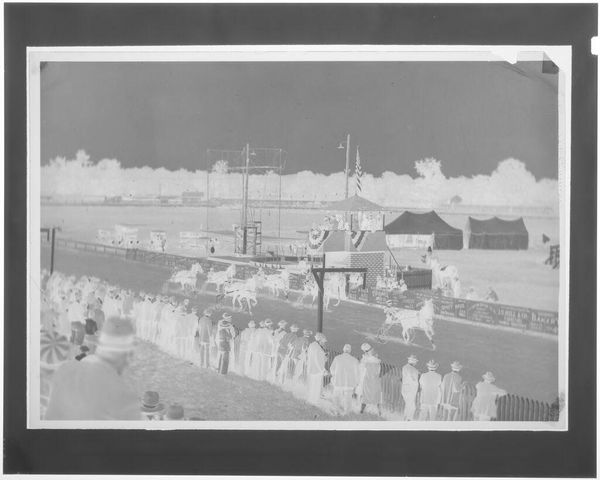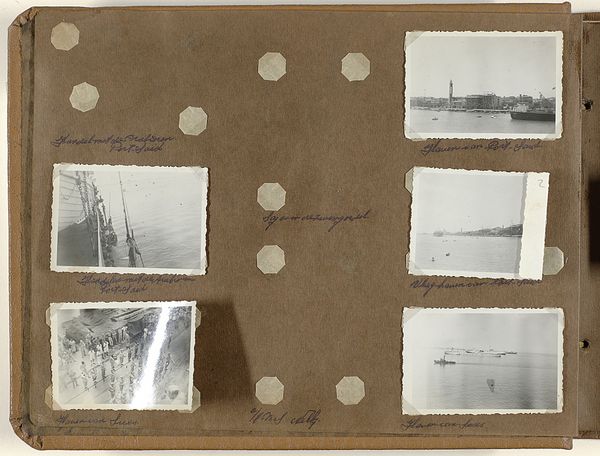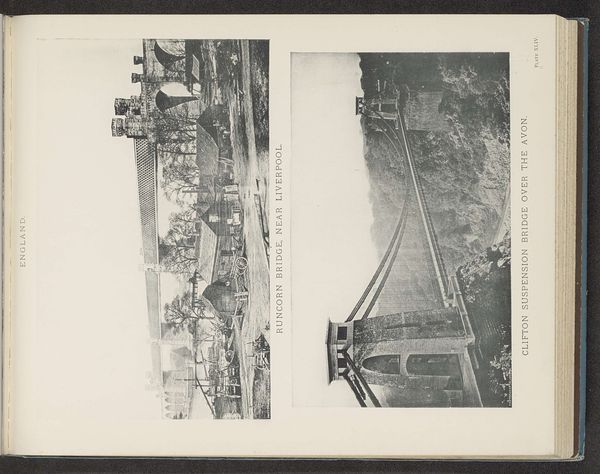
photography, gelatin-silver-print
#
boat
#
architectural landscape
#
sculpture
#
war
#
landscape
#
photography
#
derelict
#
figure in landscape
#
gelatin-silver-print
#
men
#
cityscape
#
history-painting
Dimensions: Image: 21.6 × 25.6 cm (8 1/2 × 10 1/16 in.)
Copyright: Public Domain
Curator: This haunting photograph, "Ordnance Wharf, City Point, Virginia," was captured in 1865 by Thomas C. Roche. Editor: It’s stark. The inverted tones lend this gelatin-silver print an otherworldly quality. Almost ghostly, with the long train of carts disappearing into the distance and the figures barely discernible. Curator: Indeed. City Point, now Hopewell, Virginia, served as the headquarters for General Ulysses S. Grant during the final stages of the Civil War. This photograph offers a glimpse into the logistical infrastructure that sustained the Union Army. Note the endless repetition of supplies – these speak volumes about the scale of industrialized warfare. Editor: What really strikes me is the sheer amount of manual labor implied. Even with the railway lines and what appear to be horse-drawn carts, moving that volume of supplies would require countless hands. The photograph reveals not just military power but also the means of production and the men involved. Curator: Precisely! And we can't ignore the power of photography itself at this time. Images like this, while documenting logistical prowess, were also shaping public opinion, framing narratives of progress and eventual victory. It becomes part of the Union's image-making project. Editor: Yes, even this seemingly objective shot reveals that making project. The photographic materials themselves are a kind of industrial product: this negative wouldn't have been easy to manufacture or cheap to transport. Photography became integral to the war effort itself, creating a visual record, but also shaping cultural memory. Curator: Consider also how the image flattens the space, almost like a stage set. The lone figures on the dock, caught in that ghostly light, become actors in this grand drama of war and nation-building. Editor: What remains after viewing is that lasting stark, raw atmosphere that permeates this photograph. One thinks about the work done, and what has happened as a result. Curator: Absolutely. Roche’s image is a poignant reminder of the intricate relationship between conflict, industrial capacity, and the very making of history itself. Editor: This is a profound testament to that interconnection: production, people, and history intermingling in the end product.
Comments
No comments
Be the first to comment and join the conversation on the ultimate creative platform.
